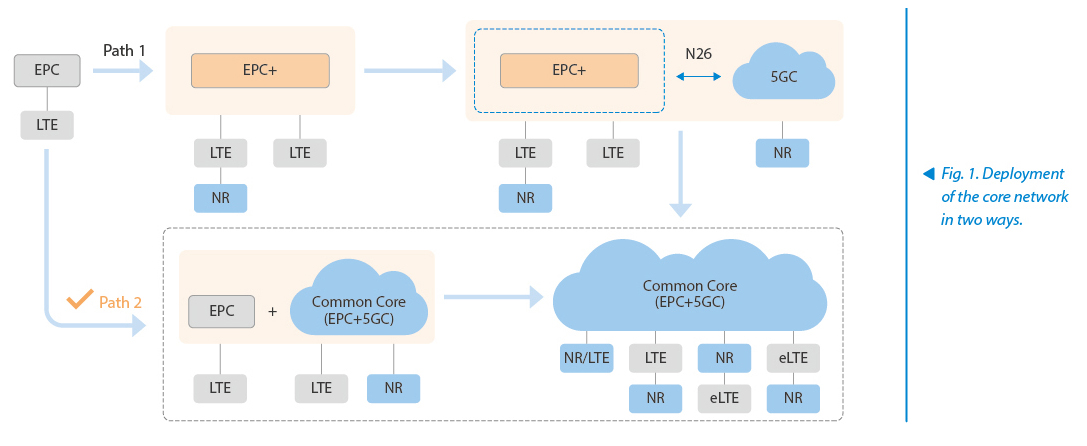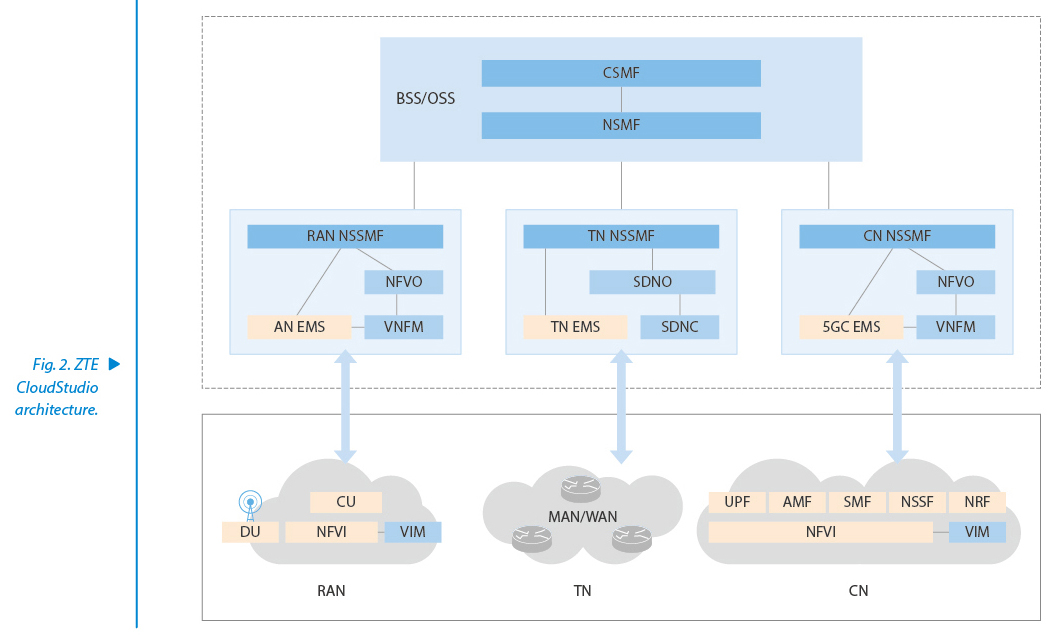Common Core Facilitates Rapid 5G Deployment
Problems in 5G Deployment
As there are more pressing demands for high-speed bandwidth in services like AR/VR, HD video and 3D video, for massive terminal access in services like smart city and smart meter reading, and for low latency and high reliability in services like internet of vehicles, industrial control and telemedicine, the pace of 5G network deployment is getting closer and the industries are full of expectations for 5G networks supplied by operators.
Operators also have big problems with how to deploy a 5G Core. On the one hand, they have to consider whether the traditional EPC network can meet the ever-changing needs of 5G vertical services, but on the other hand, the 5G Core using the service-based architecture (SBA) has brought a great impact on traditional telecom networks. Changes are made on the interoperability of existing devices and their operational mode.
The major problems operators have to face when deploying the 5G Core are how to meet the needs of industry users, how to coexist with existing networks, how to swap users seamlessly, and how to operate and maintain their networks.
Solutions for 5G Core Deployment
Deploying 5GC Directly vs. Upgrading EPC

To meet the user need for internet connection via 5G, the core network is chiefly deployed in two ways (Fig. 1):
- Path 1: Upgrade the evolved packet core (EPC) to support 5G wireless access (5G architecture Option3)
- Path 2: Deploy the 5G core network (5GC) directly (5G architecture Option2)
Upgrading EPC to 5G faces a big problem: it does not support network slices that are required by 5G vertical industry. The upgrade solution is just a transition to 5G evolution. After the 5G core network is deployed, the cost of upgrading the original EPC will be wasted. However, deploying the 5G core network directly can best meet service needs and avoid unnecessary investment waste, so it is the preferred solution for current 5G deployment.
Another important factor for deployment path selection is whether the industrial chain can meet the requirements of commercial time. Currently, the 5G Core R15 specification has been officially released by 3GPP. The system equipment and terminal devices in compliance with the specification can meet the time requirements for commercial use in the fourth quarter of 2019.
Therefore, deploying 5GC directly (using 5G architecture Option2) is the best deployment path for 5G evolution.
Using Legacy Interfaces to Reduce Network Changes
The key issues in deploying a new network are what changes made on existing network devices and how to coexist with them.
In order to make full use of the legacy network, the general principle adopted for network construction is new network for new users while legacy network for old users. In other words, the existing EPC provides access service for original 2G, 3G and 4G users, and the newly built 5G Core offers access service to 5G users.
To enable service continuity when handover is performed from newly-built 5G Core to existing EPC, operators need to upgrade existing network devices to support necessary interworking interfaces. For example, connect 5G terminals to the new 5G Core to make them identified, and introduce the N26 interface for smooth and fast handover between 4G and 5G. However, there are two issues in changing existing network equipment: one is waste of investment, and the other is that the R&D cycle caused by the network change may affect the time of commercial deployment. Therefore, making full use of legacy network interfaces has become the best solution for the initial 5G deployment.
The 3GPP 5G standards have also made a great change to the billing system, so operators need to change their billing systems. The online and offline billings are integrated and use service-based interfaces. However, the existing network's offline billing system is generally undertaken by the BOSS, and its online billing is undertaken by the OCS, which makes it difficult to change. Therefore, the newly-built 5G Core expands a small number of fields with 5G features based on the original EPC billing architecture and interfaces. This makes the least change to the existing billing system and is the best billing deployment solution.
ZTE has rolled out its Common Core that converges EPC and 5GC capabilities. Without any upgrade or change to the existing EPC, the Common Core solution can achieve convergent access and smooth handover in the 4G/5G overlapping coverage area, while guaranteeing service continuity and requiring a minimum change to the existing billing system. Therefore, the Common Core solution is the best choice for initial 5G deployment.
Smoothly Evolving to 5G Network without Changing the SIM Card or Phone Number
After deploying a new network, what makes operators headache is how to migrate users of the legacy network to the new network.
For the transition from 2G/3G to 4G, a user needs to install a new SIM card and the operators have to invest a lot in offering free card replacement service. However, a 5G network will be compatible with the original 4G SIM card, that is, the user only needs a new 5G mobile phone to enjoy 5G high-speed data service without changing the SIM card and phone number. This will find favor with users.
To migrate original users from 2G, 3G and 4G to 5G, it is necessary to sign up such users to 5G services. Usually, there are two ways to migrate the user number segment to 5G:
- Single user migration: The user can choose whether to enable 5G services. The solution helps operators carry out independent billing and special package offerings for 5G services. The existing 4G network signing system can also be fully used.
- Batch migration of user number segments: The system directly migrates existing user number segments to the newly-built 5GC. Though the solution does not require users to modify their subscription network, it is not conducive to the development of differentiated 5G packages.
One-Button Deployment Opens the Road to Intelligent Operations
The 5G Core adopts a slice network architecture based on the NFV technology. The software and hardware integration of traditional NEs becomes the architecture with a hardware resource pool, a virtualized resource pool and separated network functions. The traditional installation and operations cannot meet the operational management under the NFV architecture.
ZTE CloudStudio network slice management system supports E2E network slicing and lifecycle management. Combined with AI technology and automated software framework, the CloudStudio system enables slice-based automation design, orchestration and deployment, and intelligent slice selection, achieving a complete autonomous network without human intervention (Fig. 2).

ZTE CloudStudio introduces DevOps to facilitate agile development and deployment of innovative services that are characterized by on-demand design, automated deployment, SLA assurance, intelligent analysis and prediction, security isolation and tenant management. Operators can develop appropriate network slicing SLA as required by the industry, regions, virtual operators and other scenarios. The CloudStudio system is used to implement comprehensive automation management that involves resource pool construction, network function deployment, daily monitoring, fault operations, as well as upgrade and expansion. This can lower the requirements on operating personnel.
Suggestions for 5G Core Evolution
ZTE suggests that the existing network could be evolved to 5G in three phases:
Phase 1: From 2018 to 2019, a convergent 4G/5G core network will be introduced to run 5G trials. Virtual EPC (vEPC) in the convergent core will also be used to expand the existing EPC. The existing network in this phase does not need to be upgraded.
Phase 2: From 2020 to 2021, 5GC will be commercialized on a large scale. The 2G, 3G
and 4G users will gradually migrate to the 5G network. In this phase, vEPC in the convergent core will interoperate with 5GC to realize smooth handover between 4G and 5G users in hotspot areas. If service continuity across 4G and 5G networks is required, it is necessary to upgrade the existing EPC for interworking with 5GC.
Phase 3: From 2022 to future, traditional devices will gradually withdraw from the network. Slice-based operations management will provide diverse end-to-end network slices that can meet different service needs in eMBB, mMTC, and uRLLC scenarios.
[Keywords] Common Core, 5GC, EPC, 5G core evolution